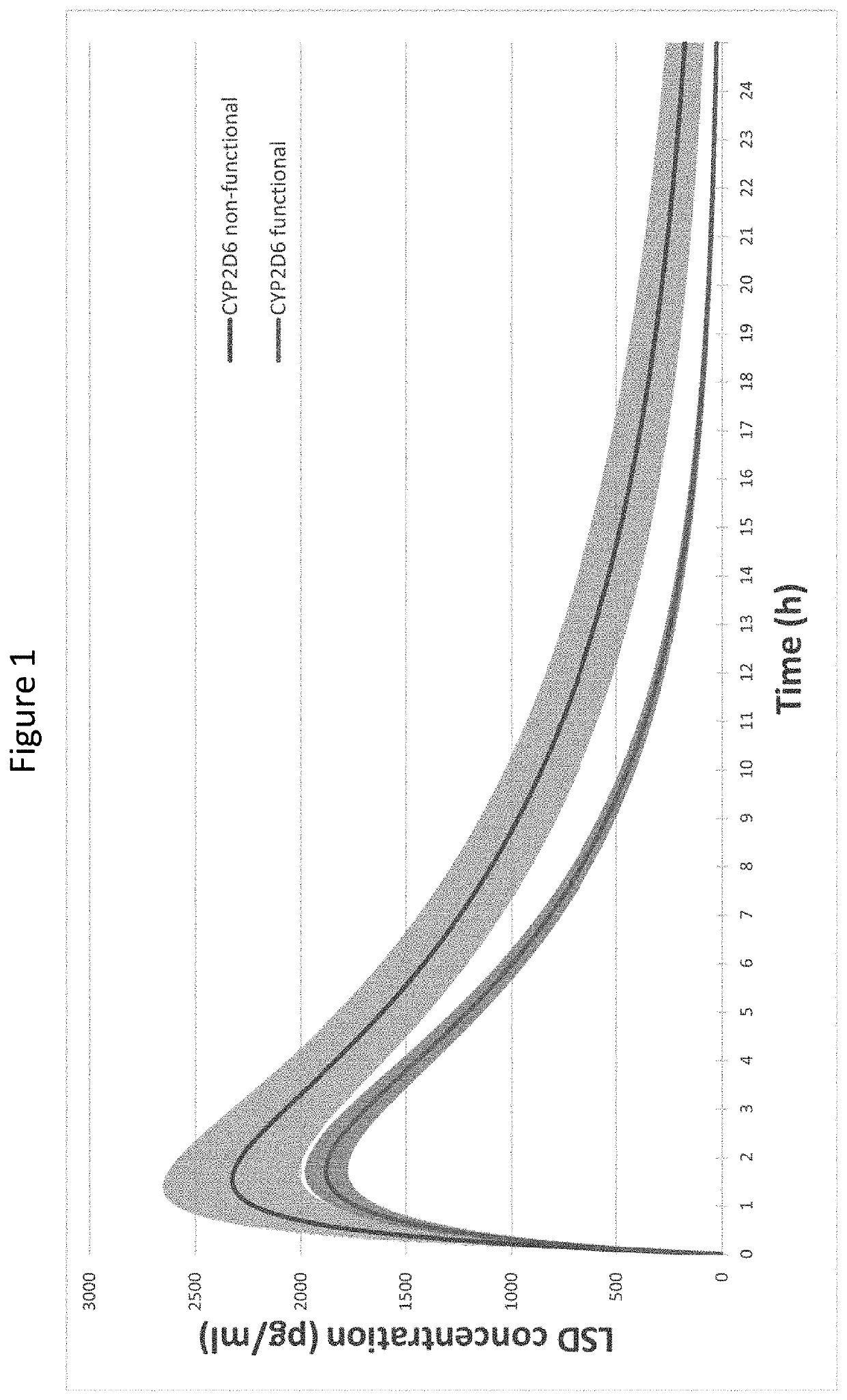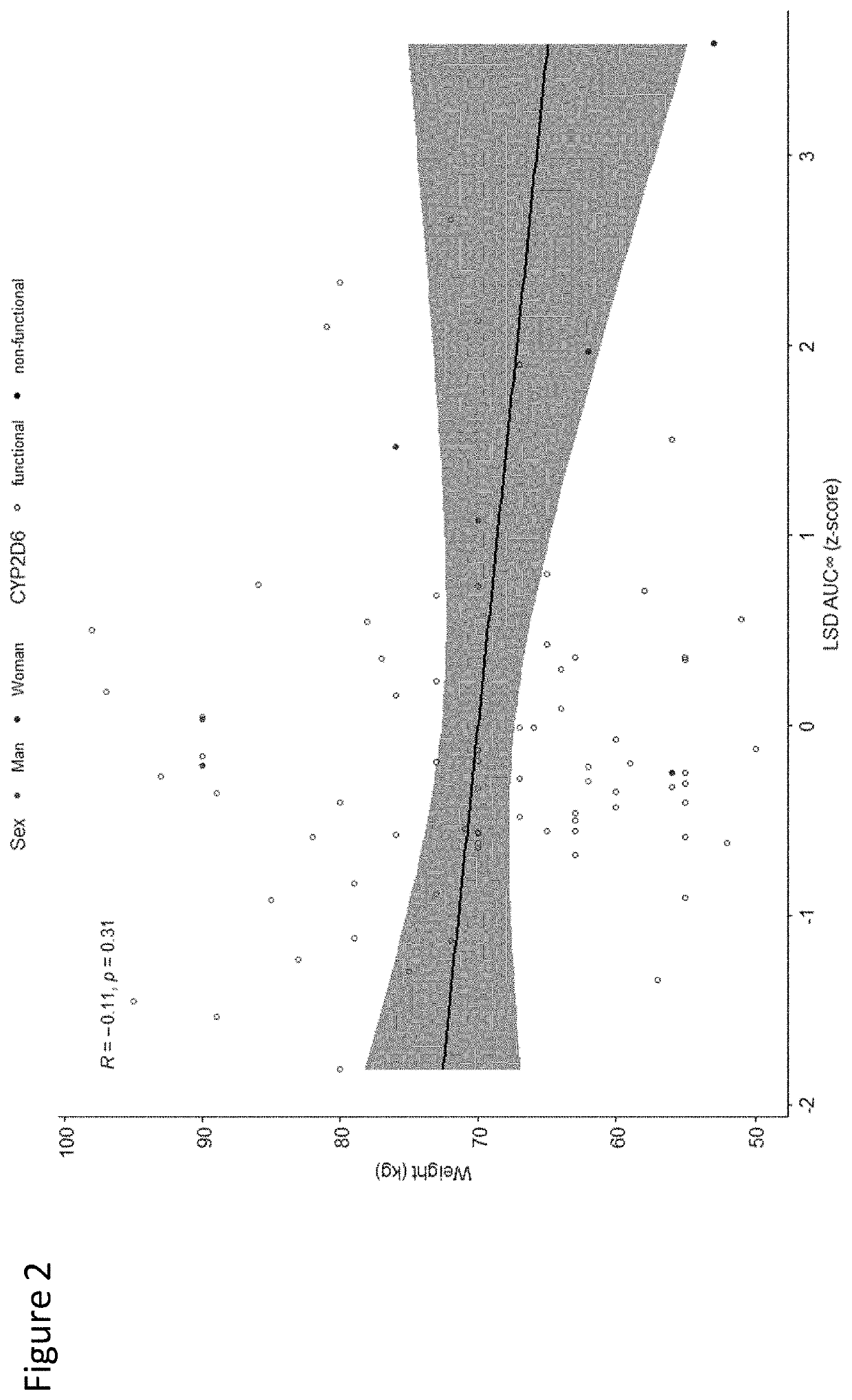Using geno- or phenotyping to adjust lsd dosing
a technology of geno- or phenotyping and adjusting dose, which is applied in the field of genetic testing and adjusting the dose and predicting the effects of lsd, can solve the problems of lsd-assisted psychotherapy affecting the patient and the treating physician, and the negative subjective effects of lsd in many humans, and the risk of acute negative psychological effects
- Summary
- Abstract
- Description
- Claims
- Application Information
AI Technical Summary
Benefits of technology
Problems solved by technology
Method used
Image
Examples
example 1
[0062]The present invention was developed based on data from a pooled analysis of clinical studies presented herein in detail. This study has been published after filing the provisional patent application (Vizeli et al., 2021).
[0063]Background of the Study
[0064]Despite its widespread use, the metabolism of LSD is not fully understood. Two recent in vitro studies showed an involvement of cytochrome P450 enzymes (CYPs) in the metabolism of LSD (Luethi et al., 2019; Wagmann et al., 2019). One study using human liver microsomes showed that CYP2D6, 3A4, and 2E1 contribute to the N-demethylation of LSD to 6-nor-LSD (Nor-LSD), while CYP2C9, CYP1A2, CYP2E1, and CYP3A4 take part in the formation of the main metabolite 2-oxo-3-hydroxy-LSD (O-H-LSD) (Luethi et al., 2019). Another study using human liver S9 fraction found that CYP2C19 and 3A4 were involved in the formation of Nor-LSD and CYP1A2 and CYP3A4 contributed to the hydroxylation of LSD (Wagmann et al., 2019).
[0065]Some CYPs (i.e. CYP2D...
PUM
| Property | Measurement | Unit |
|---|---|---|
| Fraction | aaaaa | aaaaa |
| Time | aaaaa | aaaaa |
Abstract
Description
Claims
Application Information
 Login to View More
Login to View More - R&D
- Intellectual Property
- Life Sciences
- Materials
- Tech Scout
- Unparalleled Data Quality
- Higher Quality Content
- 60% Fewer Hallucinations
Browse by: Latest US Patents, China's latest patents, Technical Efficacy Thesaurus, Application Domain, Technology Topic, Popular Technical Reports.
© 2025 PatSnap. All rights reserved.Legal|Privacy policy|Modern Slavery Act Transparency Statement|Sitemap|About US| Contact US: help@patsnap.com



